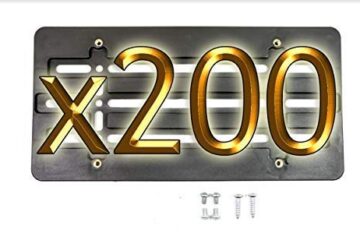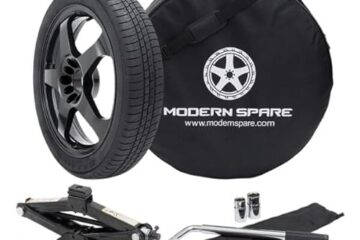1350 Vs 1410 U Joint : Which U Joint is Best for Your Vehicle?
The main difference between 1350 and 1410 u-joints is their size, with the latter being larger. U-joints, or universal joints, are an important component in various mechanical systems, connecting two shafts to allow for movement without losing power transmission.
Understanding the differences between various types of u-joints is necessary to ensure proper operation and performance. The 1350 and 1410 u-joints differ mainly in size, with the 1410 being the larger of the two. This means it can handle more torque and is often used in heavy-duty applications such as off-road vehicles, large trucks, and industrial equipment.
However, it is important to note that the specific application, load, and other factors should also be considered when choosing between these u-joints to ensure the best performance and longevity.
Understanding U Joints And Their Importance In A Vehicle
U joints or universal joints are mechanical components in a vehicle that allow for torque transmission between the driveshaft and the wheels. They are crucial for the smooth operation of the vehicle. The 1350 and 1410 u joints are both types of heavy-duty u joints and their main difference lies in their size and strength.
While the 1350 u joint is smaller and suitable for light to medium duty applications, the larger and stronger 1410 u joint is recommended for heavy-duty applications, such as 4wd vehicles and trucks. Choosing the right u joint is important for the long-term operation of the vehicle and to prevent damage and breakdowns.
Regular maintenance and replacement of worn-out u joints are crucial for the longevity of a vehicle.
Differences Between The 1350 And 1410 U Joints
The two most popular types of universal joints, 1350 and 1410, are quite similar in construction, with the most significant difference being their size. The 1410 is larger and often used in heavy-duty vehicles, whereas the 1350 is more often used in medium-duty applications.
The 1350 has a cross width of 3. 625 inches, while the 1410 has a cross width of 4. 187 inches. Both joints have similar torque ratings, and both are suitable for off-road and racing use. Overall, the choice between the two boils down to personal preference and what kind of vehicle they will be used in.
It is crucial to select the appropriate joint size to ensure a reliable and safe connection between the driveshaft and transmission.
Factors To Consider When Choosing Between The 1350 And 1410 U Joints
Although the 1350 and 1410 u joints are similar, their differences can make them more preferable in certain situations. When choosing between the two, it’s important to consider your vehicle’s power and size. Generally, heavier vehicles with more torque require the 1410 u joints, while lighter vehicles can use the 1350 u joints.
The 1410 u joints are also preferred for vehicles that tow or do off-roading. Another factor to consider is the cost, as 1410 u joints are typically more expensive. Ultimately, the decision between the two comes down to your vehicle’s needs and usage.
Pros And Cons Of The 1350 And 1410 U Joints
A u-joint is an essential component of a drive shaft that connects the transmission to the rear differential. The 1350 and 1410 u-joint types are among the most popular, and they have their pros and cons. The 1350 u-joint is smaller in size, cheaper, more compact, and suitable for light-duty applications.
It can withstand a maximum torque of 600 lb. -ft. and is perfect for a daily driver. On the other hand, the 1410 u-joint is larger and more robust, making it ideal for heavy-duty applications such as racing or towing.
It can handle up to 1900 lb. -ft. of torque, making it relatively durable. Both u-joints have their advantages and disadvantages, and the choice depends on the application. It’s essential to select the right u-joint to ensure optimum performance and longevity.
Making The Right Choice: Which U Joint Is Best For Your Vehicle?
U joints are essential components of your vehicle’s drivetrain. If you’re in the market for a new u joint, you might have come across the 1350 and 1410 options. Selecting the best u joint for your vehicle requires some consideration.
You might need to know the amount of torque produced by your engine and the size of your driveshaft. Don’t forget to consider the size of your tires and the intended application of the vehicle. Keep in mind that the 1350 u joint is best for light to medium-duty applications.
Meanwhile, the 1410 u joint is a more heavy-duty option suitable for tough conditions. Before purchasing any u joint, always check with a reputable mechanic to ensure that your decision aligns with your specific requirements.
Frequently Asked Questions For 1350 Vs 1410 U Joint
What Is The Difference Between 1350 And 1410 U Joint?
The difference between 1350 and 1410 u-joints is their size, where 1410 is larger and can handle higher torque and horsepower.
Can I Replace A 1350 U-Joint With A 1410 U-Joint?
Yes, it is possible to replace a 1350 u-joint with a 1410 u-joint, but it requires a different yoke or driveshaft.
Which U Joint Is Better For Heavy-Duty Vehicles?
The 1410 u-joint is better suited for heavy-duty vehicles because it can handle higher torque and horsepower without breaking.
Conclusion
To conclude, choosing between the 1350 and 1410 u joint depends on the intended use of your vehicle. The 1410 offers greater strength and durability, making it a better choice for heavy-duty applications such as towing or off-roading. On the other hand, the 1350 is more versatile and suited to daily driving and moderate use.
Both u joints have their advantages and limitations, so it’s crucial to select the right one for your specific needs. When looking at u joints, it’s essential to note the size, fit, and application to ensure the longevity and proper function of your vehicle.
Considering the information provided in this article and consulting with experts, you can confidently select the u joint that suits your vehicle’s needs best. With the right choice, you can ensure the durability and longevity of your vehicle’s driveline and enjoy a smooth and comfortable driving experience.





0 Comments